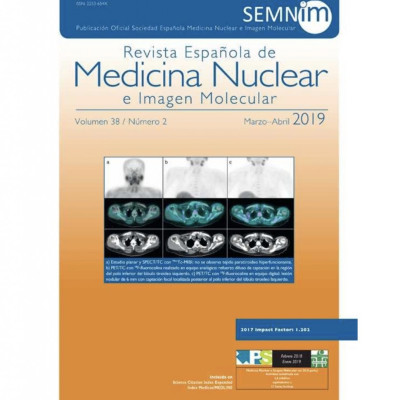Publication
Global heterogeneity assessed with 18F-FDG PET/CT. Relation with biological variables and prognosis in locally advanced breast cancer.
M.J. Tello-Galán, A.M. García Vicente, J. Pérez-Beteta, M. Amo-Salas, G.A. Jiménez Londoño, F.J. Pena Pardo, A. Soriano, V.M. Pérez García
Rev Esp Med Nucl Im Mol 38(5) 290-297 (2019)
MOLAB authors
Abstract
Aim
To analyze the relationship between measurements of global heterogeneity, obtained from 18F-FDG PET/CT, with biological variables and their predictive and prognostic role in patients with locally advanced breast cancer (LABC).
Material and methods
68 patients from a multicenter and prospective study, with LABC and a baseline 18F-FDG PET/CT were included. Immunohistochemical profile [estrogen receptors (ER) and progesterone receptors (PR), expression of the HER-2 oncogene, Ki-67 proliferation index and tumor histological grade], response to neoadjuvant chemotherapy (NC), overall survival (OS) and disease-free survival (DFS) were obtained as clinical variables. Three-dimensional segmentation of the lesions, providing SUV, volumetric [metabolic tumor volume (MTV) and total lesion glycolysis (TLG)] and global heterogeneity variables [coefficient of variation (COV) and SUVmean/SUVmax ratio], as well as sphericity was performed. The correlation between the results obtained with the immunohistochemical profile, the response to NC and survival was also analyzed.
Results
Of the patients included, 62 received NC. Only 18 responded. 13 patients relapsed and 11 died during follow-up. ER negative tumors had a lower COV (p=0.018) as well as those with high Ki-67 (p=0.001) and high risk phenotype (p=0.033) compared to the rest. No PET variable showed association with the response to NC nor OS. There was an inverse relationship between sphericity with DFS (p=0.041), so, for every tenth that sphericity increases, the risk of recurrence decreases by 37%.
Conclusions
Breast tumors in our LABC dataset behaved as homogeneous and spherical lesions. Larger volumes were associated with a lower sphericity. Global heterogeneity variables and sphericity do not seem to have a predictive role in response to NC nor in OS. More spherical tumors with less variation in gray intensity between voxels showed a lower risk of recurrence.















